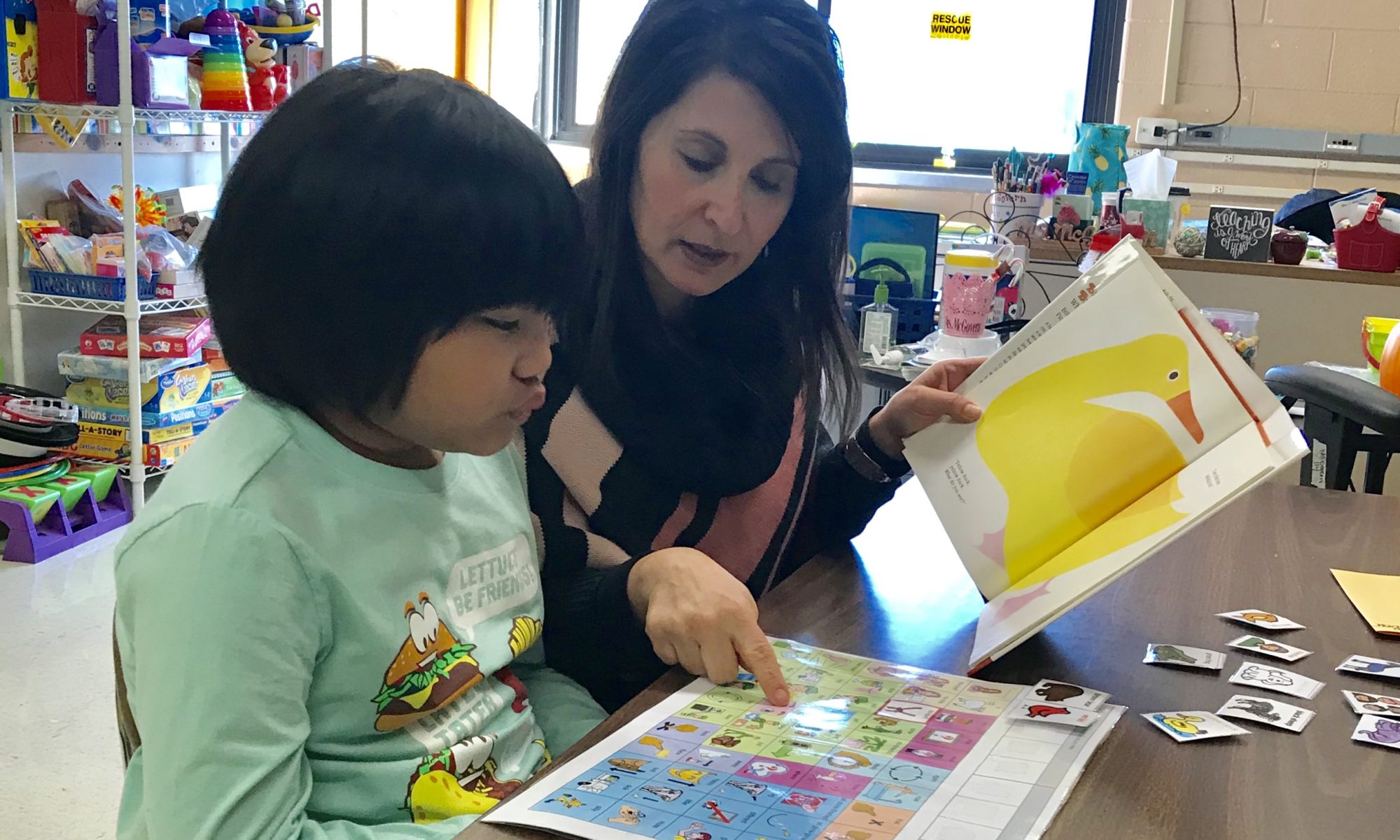While teachers and therapists might feel the pressure to get students to settle down and get work done in the classroom, allowing time for young AAC users to feel listened-to is an important first step towards engaging them in learning. Even if we feel pressured to get on with reaching set objectives, we need to remember that making students feel listened-to is a first step towards engagement in learning. Slow is better.
AAC Questions We Need to Ask Ourselves
- Can we allow ourselves the time to listen to the AAC students in our class? Or are we going to succumb to our default tendencies of using behavioral strategies to get students to comply?
- Is compliance what we want? Or are we really interested in getting the student to engage in learning?
What can seem daunting at first glance, however, can be quite straightforward. A child that feels listened-to is generally a happy child. Rather than focusing on getting the child to settle down, we also need to develop an understanding of how the child is experiencing the transition. If we can be with the student, then ways to facilitate the child’s transition to the classroom may come without much intervention effort. Dealing with change is difficult for all, hence, we need to move slowly to allow our students to feel that we are interested in what they have to offer. We can only respond meaningfully if we have some idea of what it feels like to be in the child’s shoes. Engaging our students in what we do is a first step towards communication and learning.
Continue reading “Making AAC Users Feel Listened-to: Slow Is Better”











